
One of the recurring themes in the art world of the 1990s and 2000s was the identity crisis of contemporary art. In essays and pamphlets, philosophers and other intellectuals presented the evolution of art as a story of decline and decay. In 1996, Jean Baudrillard summed up the situation in these terms: “Most contemporary art is engaged in just this: appropriating the banal, the throwaway, the mediocre as value and as ideology … It claims to be null – ‘I am null! I am null!’ – and it truly is null”.
Baudrillard no longer believed that there was a formal difference between art and reality. Evidently, art could now be anything, and anything could be art. What such voices perceived as a problem, others, namely the artists, often perceived as a potential and an opening. Several of the Danish artists who made their breakthrough during this period did not see the crisis as critical. Rather, they saw it as liberating. For them, contemporary art’s identity crisis was a cause for celebration.
Once anything could be art, anything goes became the order of the day. This attitude was partly an echo of the classic avant-garde from the first half of the 20th century – albeit without the long shadows of the world wars looming over it – and partly an echo of the 1960s and 70s neo-avant-garde. Artists of the 1990s, such as Superflex, Olafur Eliasson, and Thomas ‘FOS’ Poulsen recognised that art had become a slippery entity, difficult to pin down. In interviews, they admitted that they too were unsure whether what they were doing was art.
Superflex became known for initiatives such as making biogas plants in Africa. Eliasson and FOS became known for manufacturing design-like objects such as furniture, lamps and pavillions. In short, art seemed to explode. It shifted and coiled, pointing in a wealth of directions all at once. It spread into adjacent fields such as social work, activism, cookery, design, architecture, and more.
In the 2010s, not much has been said about the crisis of contemporary art. If by ‘crisis’, we mean a critical condition in a patient, one that may result in their demise, we can only assert that no such thing has happened. The tragedy never came. Art may have evolved and changed, but few would think it no longer exists. By and large, the producers and consumers of art appear to have made their peace with the fact that art can be anything. That’s not necessarily a weakness anymore. Rather, it is a strength. Even so, I think we may still speak of a crisis of contemporary art during the 2010s. Today, however, the crisis does not concern art. Today, the crisis focuses more on the contemporary aspect.
The challenge no longer resides in the explosion of art, but rather in its implosion. In other words, if the crisis of contemporary art in the 1990s and 2000s was the crisis of art, then the crisis of contemporary art in the 2010s concerns contemporaneity. It follows, then, that properly understanding what one might call the second crisis of contemporary art requires us to look beyond the field of art for a while.
The present contracts
This implosion means that the present gets shorter. The future becomes the present faster than before, and the present fades into the past with similar rapidity. While it is true that modernity has been conceived as changeable, I would say that viewing it as a state of acceleration, too, is a relatively new thing.
Today, it is becoming increasingly clear that the world is not just changing fast, but faster and faster. As more and more happens over ever-shorter periods of time, the gap between the time which producers of new goods inhabit and the time which their consumers inhabit keeps widening. Accordingly, contemporary artists grow uncertain about whether the contemporary world they try to grasp actually reflects the current world of their audience.
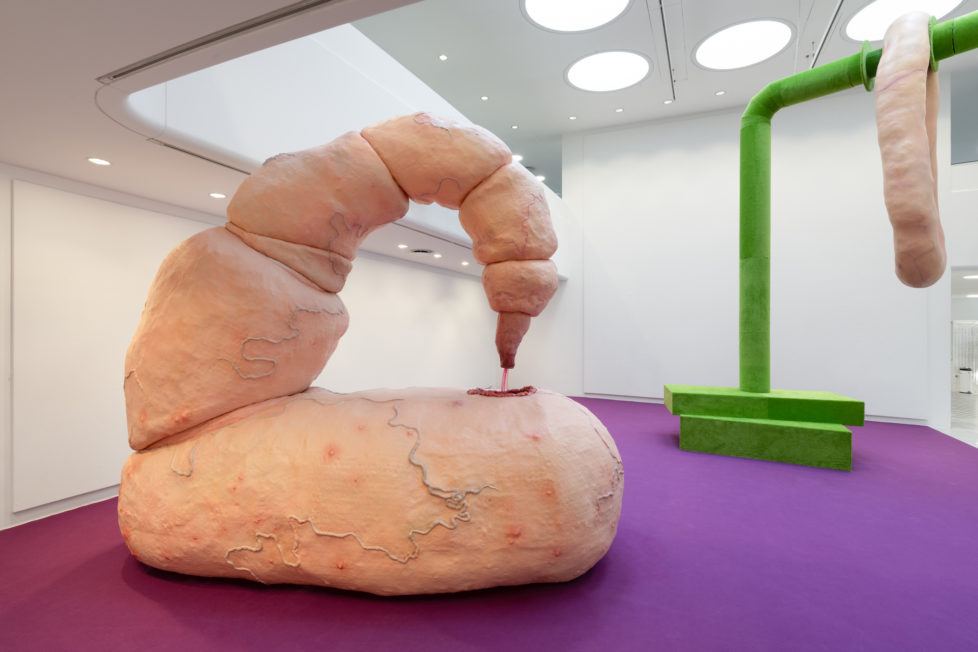
As German philosopher Hermann Lübbe points out in a 1998 text, more and more things are becoming obsolete with increasing rapidity. Predicting the future is becoming increasingly difficult, as is learning from the past. The present “contracts,” as Lübbe puts it. As an example, he highlights the development known as techno-scientific progress: “The quantity of innovations per unit of time in some cultural domains, especially research and development, production, and organisation, continues to increase constantly. This compression of innovation has a temporal consequence for contemporary culture that has long since become unmistakable: it makes the present contract.”
The best-known and instructive example of the exponential acceleration described by Lübbe and others as a fundamental condition of society is what is known as Moore’s Law. In 1964, Intel founder Gordon Moore pointed out that the density of components on a computer chip doubles every one to two years, meaning that the price is halved during that same period. His prediction has proven largely accurate even up to our present day. This ‘law’ is a self-fulfilling prophecy in the tech industry where competitiveness requires acceleration.
As inventor and futurologist Raymond Kurzweil has demonstrated, Moore’s Law is not restricted to the development of computer chips and thus computing power: “This exponential growth in the power and price-performance of information-based technologies is not limited to computers but is true for essentially all information technologies and includes human knowledge, measured many different ways.” Similar developments can also be found within many other fields, ranging from artificial intelligence to sustainable energy to published research.
Kurzweil and similar technology thinkers are less interested in tracing comparable developments beyond the operations of information technology. For example, the accelerating changes in the technosphere are spreading to the biosphere – and even the atmosphere and hydrosphere – with which the technosphere shares its metabolism.
Within the new Anthropocene research of the 2000s, according to which humankind has become a planet-changing force, this development is referred to as “The Great Acceleration.” The result is an exponential increase in carbon dioxide emissions, surface temperature, water levels, ocean acidification, deforestation, loss of biodiversity, and more. Acceleration is felt not only in our human society, but also across the globe’s ecosystems. Changes in culture are also changes in nature.
Out of the present
The history of art is inextricably bound up with the history of technology. However, the changes taking place in the realm of art are difficult to measure. Lübbe points to cultural theorist Hans Robert Jauss and his efforts to create an overview of periods as established in conventional art history:
In the half century between 1850 and 1900 seven large stylistic movementsin visual art are conventionally distinguished, from Realism to the beginnings of Secessionism … In contrast, more than twice this number of stylistic movements is distinguishable during the single decade between 1960 and 1970, in this case from Magic Realism to Environmentalism. This means a rise in the rate of artistic innovation by a factor of ten over 120 years.
Updating Jauss’s research would be difficult today. We appear to have reached a point where we are no longer enumerating or speaking about new stylistic or artistic movements. This is not only because the explosion of art may now be complete. It is also because the implosion of our present is now palpable. In other words, this is not a matter of art no longer evolving, but rather evolving so rapidly in sync with the surrounding world, that we can barely articulate what is happening before we have moved on.
While the socially oriented relational aesthetic formulated by curator Nicolas Bourriaud was an influential movement in the art world in the 1990s and 2000s alike, the only major movement since then almost seems to have faded away the very moment it broke through. When artist Janus Høm first introduced me to the concept of post-internet art in 2010, he said in the same breath that the movement’s main exponents no longer liked the concept.
Agenda-setting magazines almost seemed to bury the movement before it could be introduced. The 9th Berlin Biennale in 2016 – curated by the New York-based artist collective, DIS, founded in 2010 – was treated as the first and last major and significant post-internet manifestation.
The biennial itself cultivated a dialogue with theorists Armen Avanessian and Suhail Malik, who would rather talk about what they called ‘post-contemporary’ or ‘past-contemporary’ than post-internet art. The two thinkers seemed to suggest that we now live in the future rather than the present. Examples include everything from “pre-emptive strikes” to Amazon and Google’s algorithms predicting what we want to buy, search for, and write.
Avanessian summed up the ideas in these terms: “We no longer have a linear time, in the sense of the past being followed by the present and then the future. It’s rather the other way around: the future happens before the present, time arrives from the future.”
However, any conclusion claiming that we operate after the present, making us post-contemporary, also reaffirms a linear conception of time in which the future becomes the present, which in turn becomes the past. The theory echoes modern ideas about progress, which fixate on the future.

Still, the ideas of acceleration and future research – which are now finally, with the introduction of 2030 and 2050 carbon dioxide reduction goals, beginning to dictate national and international political agendas – are only half the story. The development of increasingly sophisticated climate models, enabling us to calculate an increasingly unpredictable future, is based on ever-better knowledge of the past.
Our present is not only contracting due to accelerating changes in the biotechnosphere. Our present is also shrinking because our time horizon is expanding. From a few centuries after the birth of Christ up until the Enlightenment era, exegetes estimated the earth’s age at about six thousand years. With the emergence of disciplines such as geology, palaeontology, and modern biology, the earth progressively became older: first it was believed to be tens or hundreds of thousands of years old; then it was millions of years during the 18th and 19th centuries; in the 20th century it was dated as 4.54 billion years old – in a universe, it should be added, now believed to be 13.8 billion years old.
In the art world, the 2010s marks the first time that our expanding time horizon seriously blurs our focus on a present that seems all the shorter as our timeline expands. Our focus shifts away from a present which constitutes a diminishing speck on the horizon to an ever-deepening future and past which put our moment in time into stark perspective. Our interest in where we are right now has been replaced by looking at where we are coming from and where we are going. Thus, art is no longer contemporary, meaning that it is no longer with time or of its time. Rather, it is out of time, meaning out of our time; it is what I call “extemporary.”
Speculations on the thing in itself
Some of the discourses which occupied much of the more theoretical spectrum of the art world in the 2010s were philosophical movements such as the so-called ‘new materialism’ and ‘speculative realism’. Quentin Meillassoux represents both directions, as he sets out to rehabilitate empirical science on philosophical grounds.
Back in the 2000s, the French philosopher launched a showdown with Kant and neo-Kantianism, according to which man knows nothing about the thing in itself, independently of man. Meillassoux opposes this idea, which reduces objective knowledge of the world to what some people, such as scientists, can mutually agree on. The French philosopher introduces a so-called ‘arche-fossil’ into the debate, an artefact that confronts man with something that went on millions or billions of years before mankind entered the scene.
As Meillassoux points out, the knowledge possessed by astrophysicists, geologists, and palaeontologists cannot be reduced to what they subjectively sense and what they intersubjectively conclude. By its very nature, their knowledge of the origins of the earth or of the universe, which belong to the past, is not based on direct perception; this knowledge is the result of calculations.
Meillassoux’s assertion of mathematics as a path to knowledge of the world is essentially too specific to the discipline of philosophy to gain traction in the art world. Even so, the fossil as such was an object of great fascination for many artists during the 2010s – as are the “technofossils” of the future around which Anthropocene research revolves. Meillassoux’s ideas pave the way for a thinking subject that is not caught up in his or her own consciousness, language, or present. He and other thinkers point towards a subject position that accesses the world through scientific speculation.
Several of the philosophers who set the agendas of art world discussions during this period are familiar faces such as Donna Haraway, who originally trained as a biologist, poetic science philosopher Michel Serres, and Karen Barad, who began her academic career as a theoretical physicist. Conversely, many of the most cited thinkers from the humanities and social sciences, such as Bruno Latour, Jane Bennett, and Timothy Morton, are the ones who engage with the climate crisis, the Anthropocene, ecology, and similar issues which one might have assumed to primarily fall within the purview of natural science.
The 2010s was also the decade when the Geneva-based organisation CERN, which operates the world’s largest particle physics research facility, created one of the era’s most desirable residency programmes for artists, first awarded to German artist Julius von Bismarck in 2012. In 2018, CERN welcomed the eclectic Danish artist Lea Porsager, who may be preoccupied with language, but whose interests also extend to quantum physics. Her aesthetically psychedelic 3D video animation CØSMIC STRIKE (2018) offers audiences a glimpse into the world as seen from a neutrino particle’s perspective.

Among other artists to also speculate on how the thing itself may appear is Amalie Smith. Her video work ENTER (2018) is a peculiar journey into the future undertaken via the National Gallery of Denmark’s digitised image collection, which takes on its own digital consciousness. The viewer follows a travelling moth, which acts as a kind of reincarnation or version of the first “computer bug” from 1947. The film is an example of the new time-travelling art that reaches beyond the contemporary present. Yet ENTER, like CØSMIC STRIKE, is part of a wider-ranging animistic movement in art, manifesting itself in events such as curator Anselm Franke’s group exhibition Animism at the Haus der Kulturen der Welt in Berlin in 2012.
In general, one could say that the art of the 2010s reflects an ever-growing interest in nature and technology’s own intelligence and agency.
However, one might also say that Meillassoux, the speculative realists, and the new materialists are part of an even broader intellectual movement that can be summed up as what is currently called anti-anthropocentrism. The term may be reductive, but it nonetheless captures an awareness of having a worldview centred around humankind – a worldview that permeates everything from popular to high culture, from the film industry to contemporary art.
If postmodernity was characterised by the demise of grand narratives, from Christianity to communism, then the 2010s reinvented this ending as the beginning of even more comprehensive narratives such as the Anthropocene and the technological Singularity – often written in capital letters, entirely in keeping with the spirit of the times. Cultural history becomes engulfed by the far more extensive natural history, offering vistas which are staggering by comparison.
One of the period’s most typical bestsellers, and one that is also widely read on the art scene, is Yuval Noah Harari’s Sapiens. A Brief History of Humankind (2001), which is in fact a long story, starting with the Big Bang – also in capital letters – some 13.5 billion years ago. Equally typical is Harari’s second bestseller, Homo deus: A Brief History of Tomorrow (2015), which is partly about a post-human future. No books seem more contemporary than those which are about anything but the present.
On the one hand, humankind is now ironically asserting itself as an even more omnipotent figure who appears central to an almost infinite history and is referred to as the planet-changing power of an entire geological epoch. On the other hand, the role of humanity is minimised, becoming an ever-shorter chapter of history and cast as a powerless creature, governed by its genes and the bacterial culture in its gut, on a globe whose technology and ecosystems are beyond its control. Human dimensions are no longer the world’s dimensions.
The 2010s re-read the 1990s
Unlike previous movements in the realm of art, the new extemporary art is not defined by a single generation’s sudden efforts. It is not a reaction or articulate revolt against previous artistic movements. There is no manifesto, no clear style, aesthetic, or attitude. Perhaps because this is less about one more trend among others and more about an actual paradigm shift. The new art seems to have arisen out of changes to the fundamental conditions of life in our new century, changes which disrupt our entire worldview – with our contracting present and extended timeline as particular examples.
Therefore, extemporary art cannot be reduced to a generation. Not necessarily because – as some sociologists have discussed – the generations seem to be getting shorter and shorter in extent. Generations usually see the light of day in rapidly changing times. No, reducing the extemporary artists to a generation would be misleading, because what they share is the very feeling of no longer working and living within a clearly defined period of time.

Some of the artists who used to be exponents of Bourriaud’s relational aesthetics back in the 1990s, working with interpersonal affairs in our present-day society, now appear to be more interested in anything but immediate human affairs. Best known among them is the French artist Pierre Huyghe. In the 1990s, he was keenly interested in subjects such as the conditions on the labour market, from road workers to the cultural industry. In the 2000s and 2010s, his art increasingly took the form of collaborations with everything from dogs, animals, and monkeys to algae and cancer cells.
His 2014 video work De-extinction, which zooms in on a mosquito trapped in a piece of amber millions of years ago, is an unmistakable reference to a scientific scenario familiar from Jurassic Park-style science fiction. Collaborating with nature, the work shifts our focus away from the present, time travelling into a vastly distant past and into the future. Huyghe has gone from being one of the main proponents of art that addresses what happens between people, to being the main point of reference for art engaged in what happens beyond man.
A similar movement is found in the work of Danish artist Henrik Plenge Jakobsen. From being an exemplary Bourriaud-style relational artist preoccupied with the darker aspects of life in the Nordic welfare state, his gaze has begun to roam further afield in space and time. Recent examples include his exhibition Liten Skandinavisk Teori (The Little Scandinavian Theory) about our current interglacial age “+/- 20,000 years” at Noplace, Oslo in 2019 and his geocentric astronomical clock indicating the exact position of celestial bodies in relation to a metro station opening in 2023 in Copenhagen. This last commission surely nods to Albert Einstein, whose theory of relativity began to take shape when he was employed in a patent office in 1902; his tasks included registering inventions for synchronising clocks at train stations worldwide. A journey by train is also a journey in space-time.
Several of the artists who were exponents of the first crisis of contemporary art also become exponents of its second crisis.
At the time they were taken, Olafur Eliasson’s photographs of glaciers on Iceland were read as images of almost unfathomable vastness. As curator Matthew Drutt commented: “The massive glaciers are seen from the sky, at a distance where we can appreciate their magnitude; in order to see them in their entirety, we need to get away from them.”
When Eliasson took photos of the glaciers again in 2014, they were perceived as images of these ice fields’ rapid disappearance. Geologist Minik Rosing, who in the 2000s became known for dating the emergence of life on Earth at least 3.7 billion years ago, also became a voice in the art world. Speaking about Eliasson’s work, he explains: “There is no longer any doubt that the climate in the Arctic is changing noticeably and rapidly. Glaciers and ice caps are dwindling, and sea ice is shrinking with potentially disastrous consequences for people around the world – rich and poor.” Far from being visions of expanses too vast to fully take in, these new photographs become images of our contracting present.

Our readings of Superflex’s biogas plants in Africa have also changed. When the orange gas balloons were first launched in the 1990s, they were hotly debated as philanthropic works which tested the limits of art. Now, they are more likely to be seen in the light of efforts to develop sustainable energy sources in a world of exponentially growing fossil fuel consumption. Artists continue to grapple with pressing socio-economic issues such as immigration, cultural diversity, copyright, and inequality, but their projects increasingly unfold within a less pressing time horizon.
In 2011, Superflex projected the world’s longest film to date onto one of Alvar Alto’s modernist buildings in Helsinki. Called Modern Times Forever and lasting 240 hours, the film is a visual projection of future events, rather like a climate model. The film shows Alto’s building left to the ravages of wind, weather, and the passage of time after humankind’s extinction, charting, over ten days of present-day time, how the building will disintegrate over the course of seven thousand years.
The group picks up on the theme again in its ongoing project Deep Sea Minding for the Thyssen-Bornemisza Contemporary Arts TBA21 Academy, which has since 2012 massively supported collaborations between artists and scientists aimed at exploring the world’s seas. The goal is to develop sculptural building blocks which can first serve humans as housing and later act as coral reef habitats for the sea’s flora and fauna in tomorrow’s flooded world.
Having been bedfellows with philanthropy – from the Greek, literally “love of humans” – in the 1990s, art goes on to lavish its love on nature in the 2010s. This might look like anti-anthropocentrism, but if we take the long view, we are probably talking about an outlook on humanity – and what it has occasioned – as both culture and nature. Being an animal among other animals and life forms, humankind is not different in itself; we are nothing special.
Close to the past
The realisations and finely honed points which have developed and matured over time among some of the older artists are by their very nature the starting points and fundamental premises for some of the younger artists and new oeuvres. While Pierre Huyghe (b. 1962) homes in sharply on the revival of extinct animal species in works such as De-extinction, younger artists such as Marguerite Humeau (b. 1986) can be said to unfold and explore this field in more complex ways.
Following her first major project, The Opera of Prehistoric Creatures in 2012, Humeau presented FOX2P at various venues in 2015, for example at Palais de Tokyo. FOX2P is the name of a gene that has mutated differently in humans and other large apes. The mutation might explain why humans can speak, enabling us to spread at high speeds in Africa and beyond some 100,000 to 50,000 years ago. Humeau’s exhibition, however, presents a scenario in which such a mutation of FOX2P occurred in elephants rather than humans. It is an alternate tale of how another animal species might have become ‘rulers of all the earth’.
Drawing on the somewhat distorted and hyperbolic language of Hollywood, we might say that Humeau is not just preoccupied with reliving a distant past as in Jurassic Park (1993). She is also interested in changing the past with her narrative, and thereby changing the present, just like in Back to the Future (1985). In the 2010s, Humeau becomes the epitome of the time-travelling artist, or in her own words: “I always want my sculptures to look like they have travelled through time and space, and maybe they are just apparitions and that they could fade at any time.”
Danish artist Rasmus Myrup (b. 1991) also causes shifts and ripples in our present when he revisits prehistory. Like Humeau, Myrup is concerned with palaeontology and archaeology as disciplines which are both strictly empirical and deeply speculative. Both artists identify with scientists who, using their powers of imagination, piece together fragments of research. The work of both artists begins where science stops – and this is made possible because the artists enter the field of science just as science can be said to enter the field of art.
Perhaps Myrup’s most distinctive approach concerns his explicit work on making the past present and immediate. He does this by making the prehistoric private or personal and the personal prehistoric. In the exhibition Loving those we lost but never knew at Galerie Balice Hertling in Paris in 2017, the artist processed a personal trauma in a show about the Mesozoic era. In drawings and video, the experience of a random stranger dying in the artist’s arms after a stabbing at a nightclub is juxtaposed with the extinction of terrestrial dinosaurs 65.5 million years ago.
In other works, presented at venues such as Myrup’s degree show for the Funen Art Academy and the exhibition Homo Homo in 2018 at Tranen Space for Contemporary Art, the artist examines homosexuality in natural history. In drawings and pastels, he depicts Homo neanderthalensis, Homo erectus, and Homo ergaster engaging in loving or sexual same-sex relations.

Here, homosexuality – proclaimed to be contra naturam in various cultures and legal texts – is inscribed as part of natural history. With its focus on procreation, the doctrine of evolution has largely ignored homosexuality, but not precluded its existence. In Myrup’s work it becomes one of the perspectives introduced in the identity politics of the 2010s.
Contrary to theoretical habit, the primacy of heterosexuality is not debunked as a social or cultural construct. Rather, based on the many examples of same-sex affection in the animal kingdom, homosexuality is simply presented as an integral part of natural history and thus of the history of Homo sapiens.
From Marx to Darwin
The 2010s saw contemporary art get an expanded frame of reference: the universal historical or sociocultural narrative underpinning much contemporary art was complemented by a natural history narrative.
For example, Marxism, which continued to inform much theorising in the 1990s and 2000s, became challenged or supplemented by Darwinism. Artists no longer treated issues such as the development of technology as simply a class-based struggle for the means of production, but as an example of humanity’s struggle for survival and expansion as a species. Similarly, the history of the industrial revolution in Europe from the 18th century onwards is increasingly framed by the history of the Neolithic revolution in the Fertile Crescent in the Middle East.
However, the expansion of the time frame – and thus the perspective – employed by the art world and beyond is by no means uncontroversial. The clashes are at their most visible in connection with discussions of the Anthropocene theory, as presented and discussed by scientists, thinkers, and artists at the Haus der Kulturen der Welt in 2013 and 2014. Summing up the debate very briefly, the question is: who is this human being, this anthropos or humanity, who gets to lend its name to an entire era? What human can be said to be the catalyst for a whole new age?

Some – in what might be termed the Marxist camp – believe that this human being is merely a privileged class of capitalists who have taken everyone else hostage. This group argues in favour of replacing the term Anthropocene with Capitalocene. Others, belonging to what might be called the Darwinian camp, believe that this single human being denotes the entire species – since the invention of agriculture and animal husbandry –and thus all of humanity.
While the former – roughly speaking – believes that the latter depoliticises the issue and exonerates capitalism of responsibility, the latter believes that the former exaggerates the impact of capitalism for political reasons. Hence, the question of the dating of the beginning of the Anthropocene reveals a new schism – one that also applies in art.
While ‘traditional’ contemporary art typically unfolds within a brief, delimited time horizon defined by sociocultural issues, extemporary art unfolds within a longer time frame defined by natural history. In practice, however, one often finds multiple perspectives on the matter, even within the oeuvres of each individual artist.
Examples include Danish artists Marie Munk (b. 1988) and Stine Deja (b. 1986), who made their entry on the art scene with striking solo and duo shows in the late 2010s. Both present a biotechnological future that gives rise to new life forms. Munk’s silicone sculptures and Deja’s animations present creatures that appear lifelike and true to nature in oddly alienating ways. The nature to which they are true is not one we know from our present or past.
On the one hand, the artists’ works have a sheen of glossy marketing aesthetics. The upcoming biotech revolution is the work of capitalism as we know it from Silicon Valley. On the other hand, the artists appear interested in delving behind capitalism, exploring where we come from as a species and where we are heading. Their practice recalls major works by the likes of H.G. Wells, Olaf Stapledon og Dougal Dixon within the genre ”speculative evolution”.
Our continued evolution seems inevitable, albeit uncertain. Marie Munk creates what she calls “pets,” creatures which have in recent works grown so large that they tower above their humans. Perhaps we ourselves will become pets of biological machines just like dogs and cats have been our pets for millennia. Stine Deja animates absurd creatures; one example consists simply of an intestinal system and a prosthetic leg, its function or purpose obscure to us in our present-day world.
Fellow Danish artist Sif Itona Westerberg (b. 1985), who presented a frieze of technofossils at her graduation from the Royal Danish Academy of Fine Arts in 2014, also grapples with the biotech revolution. Carved out of aerated concrete, Itona Westerberg’s creatures from the late 2010s may be as strangely imaginative as Munk’s and Deja’s, but they do not look like something that awaits us decades, centuries, or millennia into the future. Quite the opposite. They are free variations on the hybrid creatures or fabulous animals found in medieval manuscripts and the like.
At a time when CRISPR gene editing has been used to inject human cells into sheep embryos and human brain cells into ape foetuses, Itona Westerberg presents future research in the guise of fantasies of the past. Once upon a time, chimeras were sculptural hybrid creatures. Today, gene technology calls some of its foetuses by the same name.
The future is the past
One of the narratives from which extemporary art can be said to be completely detached is the grand narrative of progress. In this regard, the new artists stand neither on the shoulders of Darwin nor Marx, whose reading of history as progressive was partly inspired by Darwin. It has been noted that the word “progress” appears more times in The Origin of the Species than the word “evolution.”
Even the founder of modern biology found it difficult to articulate the history of evolution, for example from simple to increasingly complicated forms of life, as anything other than a steady progression toward better times. Here we find the seed of a determinism which has discredited the doctrine of evolution. Today, human beings, who in the tradition of both Christianity and René Descartes have considered themselves the lords and purpose of life on earth, must also recognise that they themselves are the greatest threat to that selfsame life.

It is becoming increasingly difficult to understand evolution as progress. It may as well be a step backwards. Indeed, it may even represent a move in both or even more directions at the same time. What is being questioned here is also what is called the “arrow of time.”
An articulated feeling that time has no single certain direction can be seen to underpin the Enlightenment era, whose definition and ideas of progress have shaped the West’s worldview ever since.
One example would be Michel de Montaigne’s satirical speculation about the invention of the horse-drawn carriage, which may be a step forward compared to horseback travel, but does not in itself guarantee that you will journey in the right direction. He made the following observation in 1580, before the idea of progress reached its peak in the Enlightenment era: “We cannot be said to progress but rather to wander about this way and that. We follow our own footsteps. I am afraid that our knowledge is in every sense weak; we cannot see very far ahead nor very far behind.”
Many will undoubtedly find Montaigne’s diagnosis apt today, but the development of disciplines such as geology, biology, palaeontology, physics, astronomy, and climatology has done its bit to thoroughly cure the myopia he skewers.
The new trope of time which may best characterise extemporary art is the notion of the future as the past. This idea can be found in artists such as Marguerite Humeau, Pierre Huyghe, Anton Vidokle, and Jakob Kudsk Steensen, specifically in their interest in how resurrection biology promises to re-create the past at some point in the future. This new temporal trope reflects a series of phenomena which force us to revise our reading of history in our own present time. The melting permafrost which causes the awakening of viruses and bacteria which have lain dormant for thousands of years and to which we humans are no longer immune is one example. Another is reverse ageing research, which facilitates people getting younger rather than older with age.
The point here is not to turn history upside down. It is not to say that progress is now being replaced by steps backwards. Rather, the point is that today, time is something we try to outrun even as we run out of it. Time has become harder to grasp.
From his special vantage point, theoretical physicist Carlo Rovelli sums up what the theory of relativity, quantum physics, black holes, and so much more have also taught us in the 20th and 21st centuries:
There is no single time: there is a different duration for every trajectory; and time passes at different rhythms according to place and according to speed. It is not directional: the difference between past and future does not exist in the elementary equations of the world; its orientation is merely a contingent aspect that appears when we look at things and neglect the details … The notion of the ‘present’ does not work: in the vast universe there is nothing that we can reasonably call ‘present’.
As we have seen, what we call our present, our contemporary time, has been shaken in its foundations by everything from exponential growth in the biotechnosphere to the expansion of our timelines to new research on theoretical physics. In the art world, this means, at a minimum, that even the avant-garde with all its progressive thinking, the legacy of which served to legitimise art during contemporary art’s first crisis, now seems untimely.
In contemporary art’s second crisis, art is directionless in a new way – just like the world. Hence, the most contemporary artists today may be the ones who are not contemporary, but extemporary. That’s certainly the outlook on the threshold between the 2010s and 2020s. Like so much else, this is liable to change at short notice. As long as art reflects this, it is hard to see an end to extemporary art.
– Toke Lykkeberg (b. 1977, DK) is a Danish curator, writer, and director of Tranen Space for Contemporary Art, Hellerup, since 2017. He was co-founder and director of the exhibition venue IMO, Copenhagen, from 2009 to 2013. He has curated numerous exhibitions, including the group show Extemporary. Art out of Time (2019–20) at NCCA Arsenal, Nizhny Novgorod, RU, and PERMM Contemporary Art Museum, Perm, RU, as well as Welcome Too Late (2017) at Kunsthal Charlottenborg, focusing on extemporary art, and Co-Workers. The network as artist (2015–6) at the Musée d’Art moderne, Paris, in collaboration with DIS.
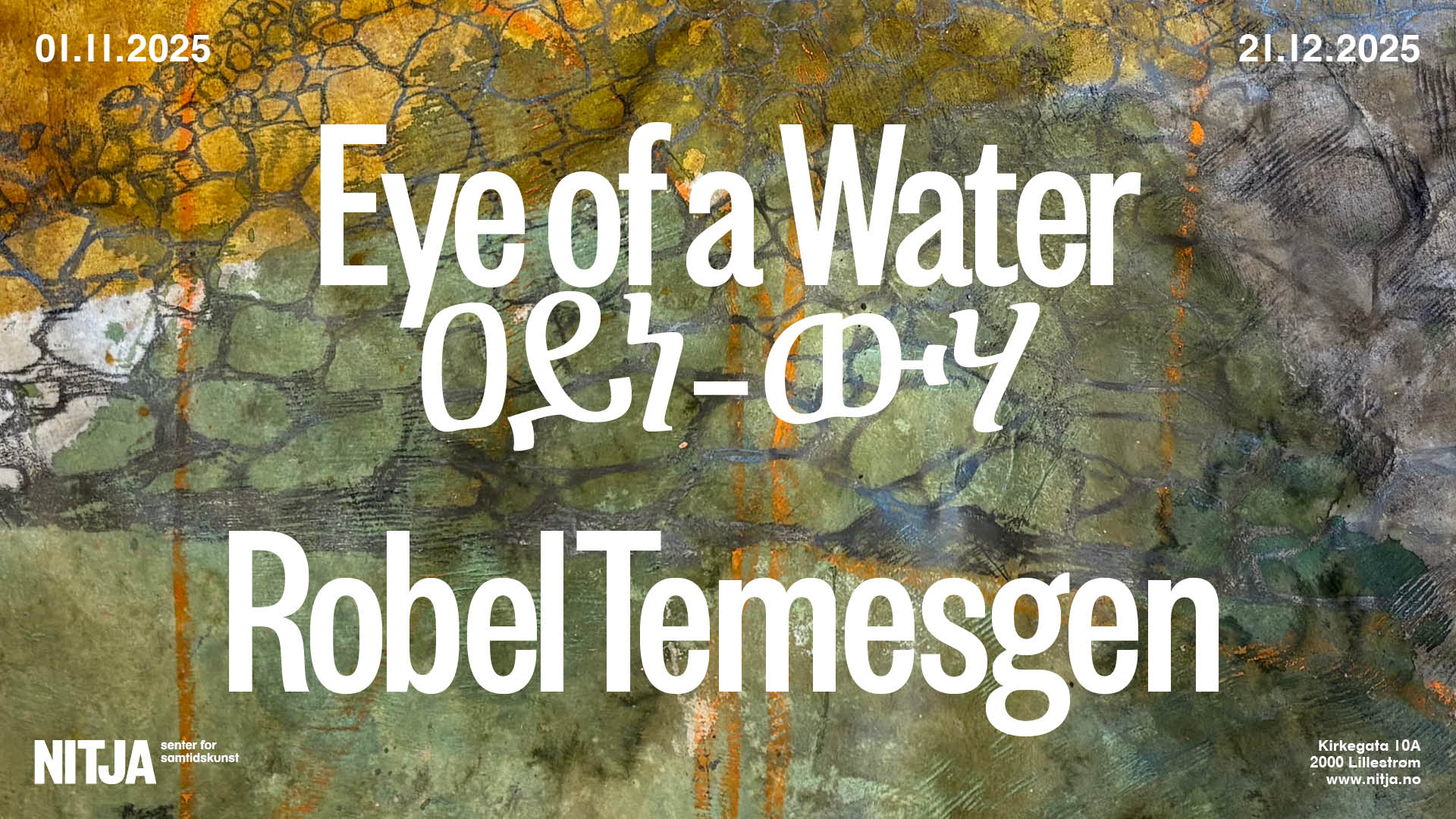








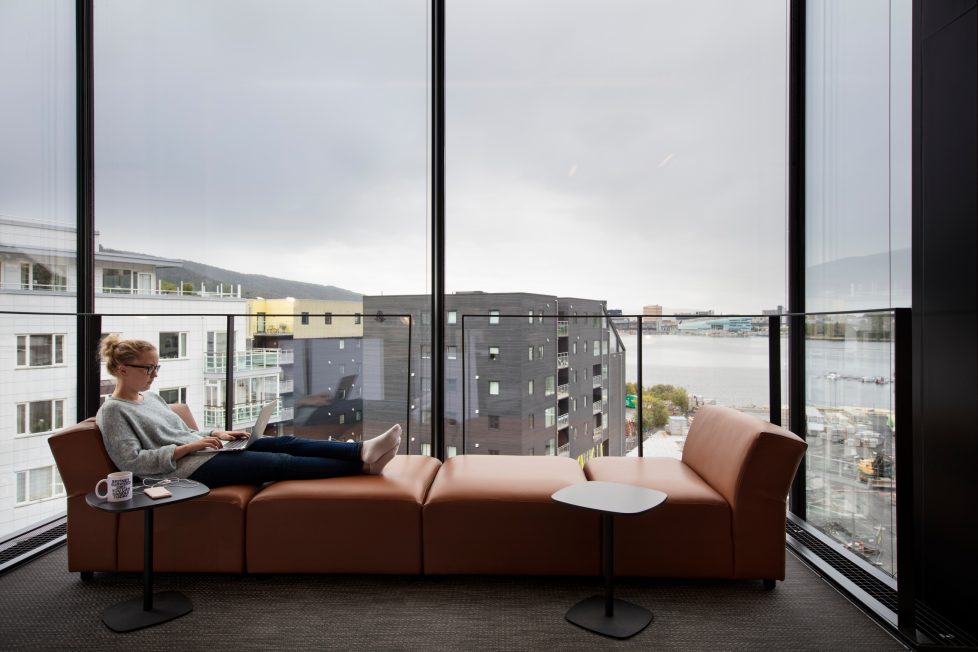
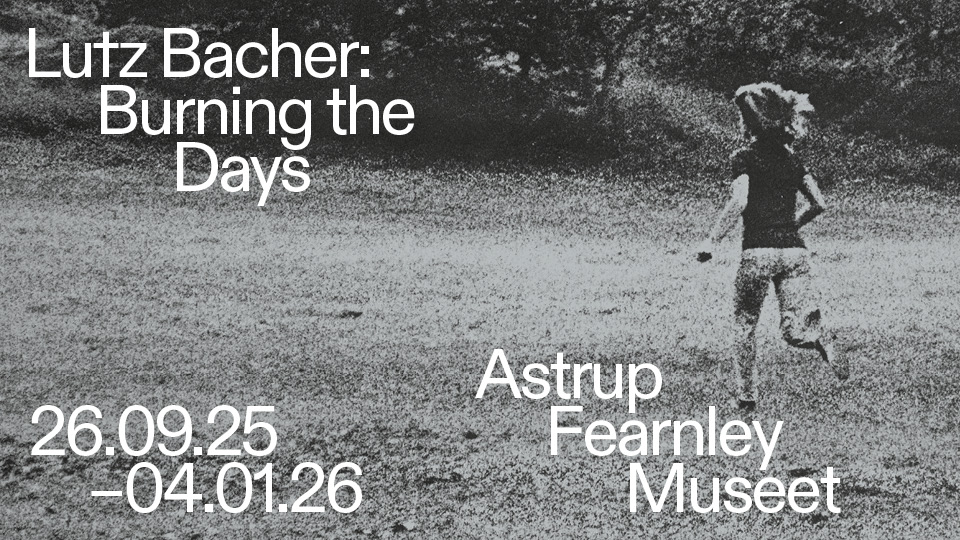
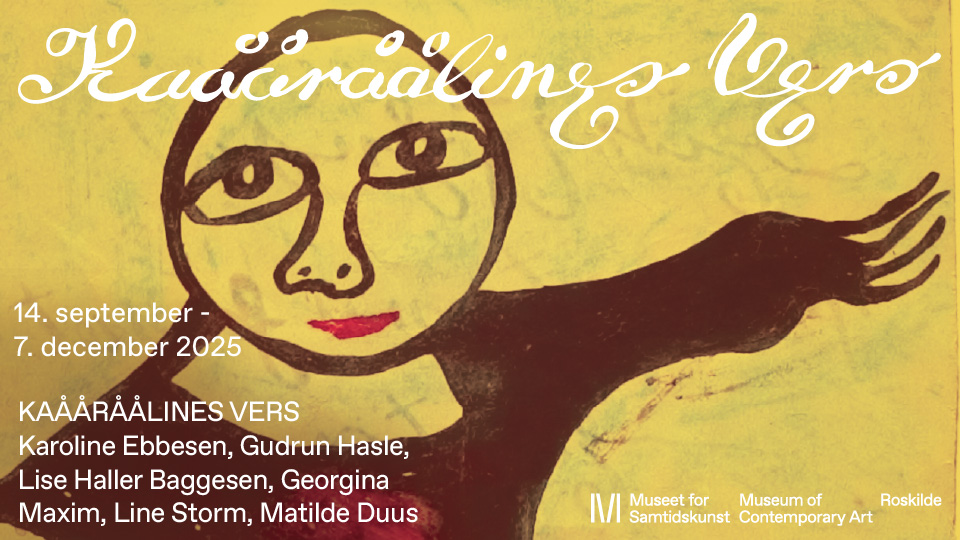
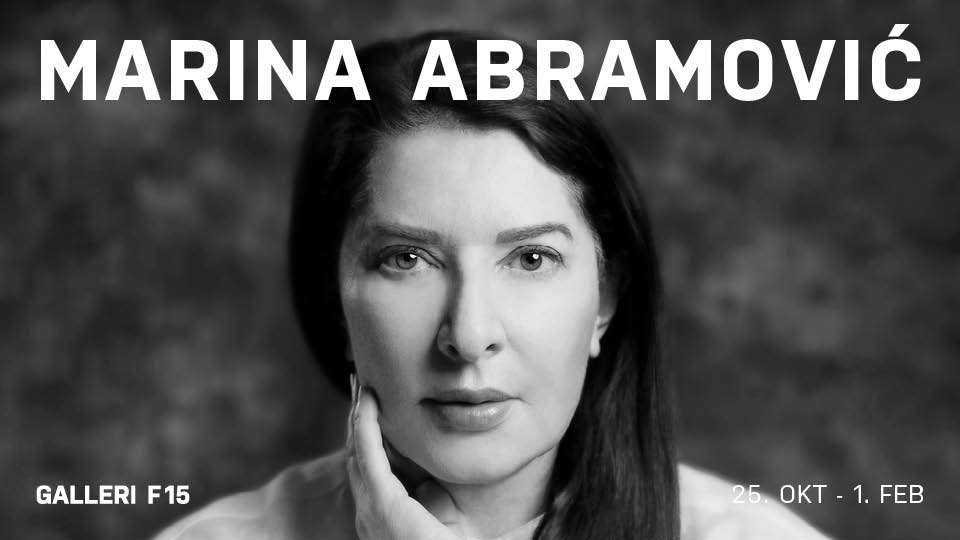
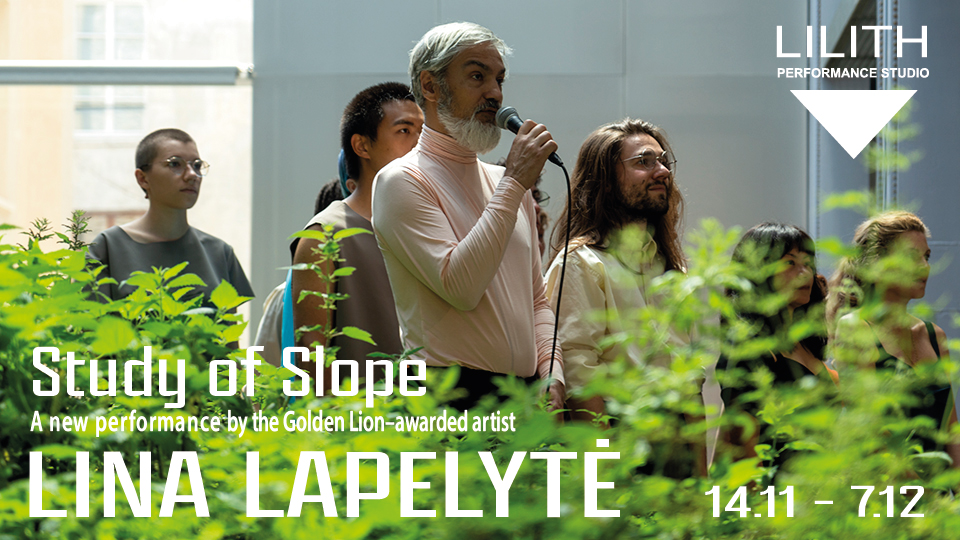
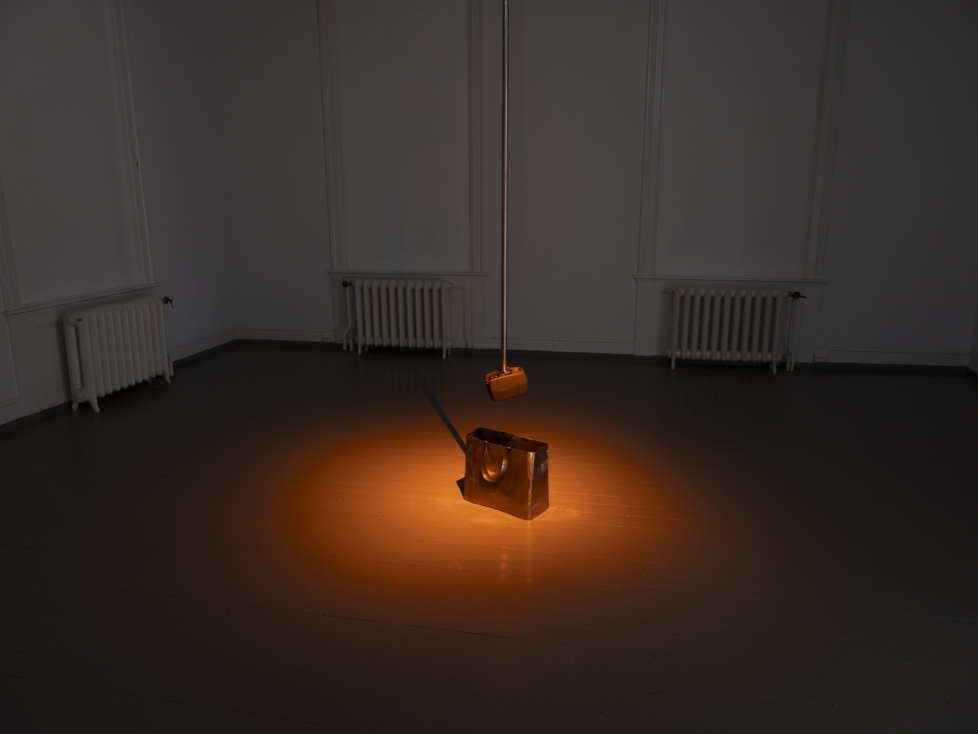
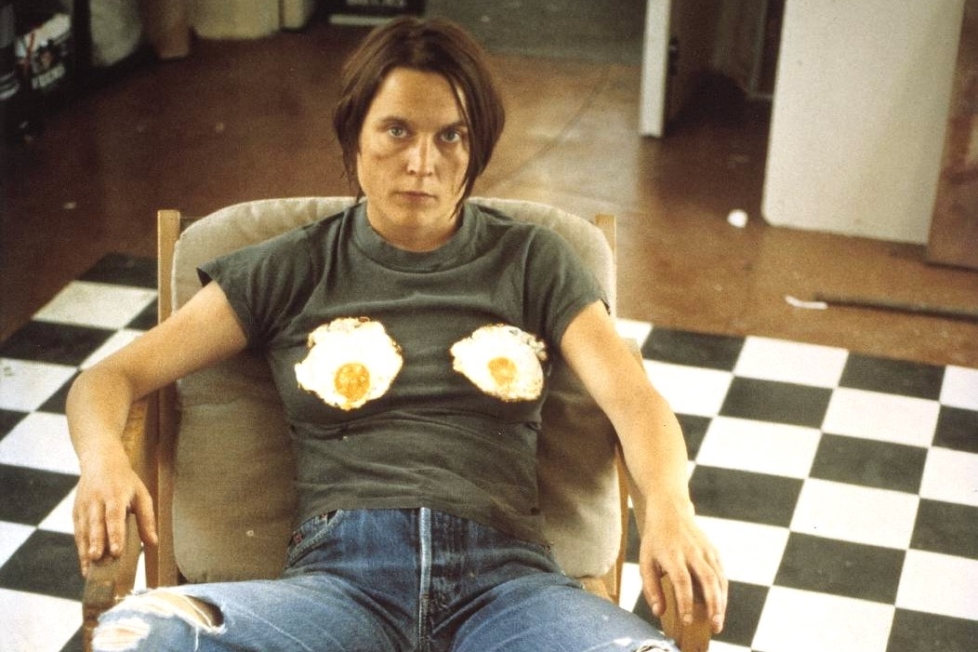
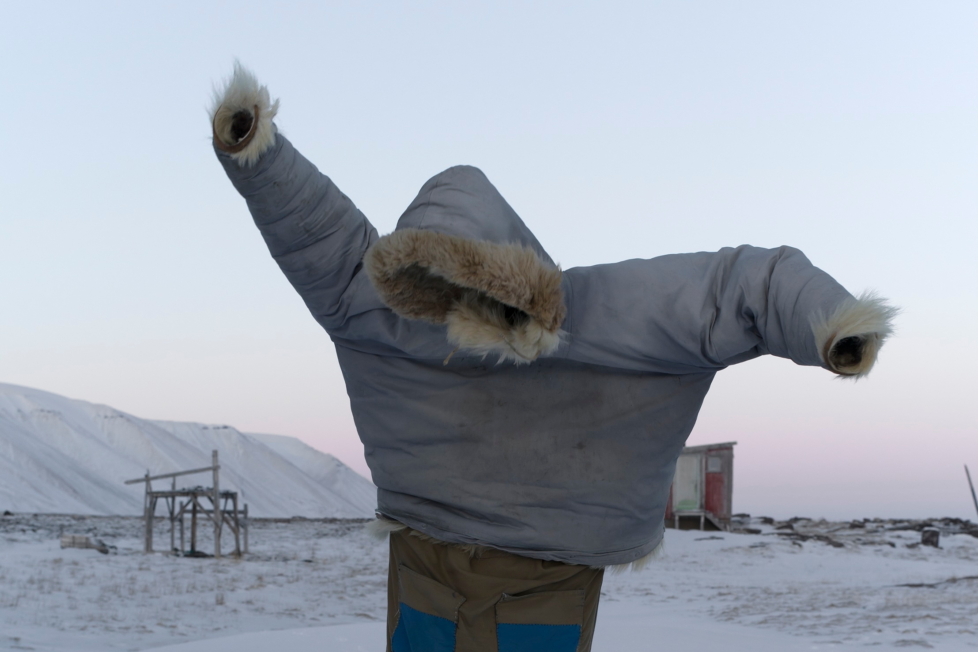
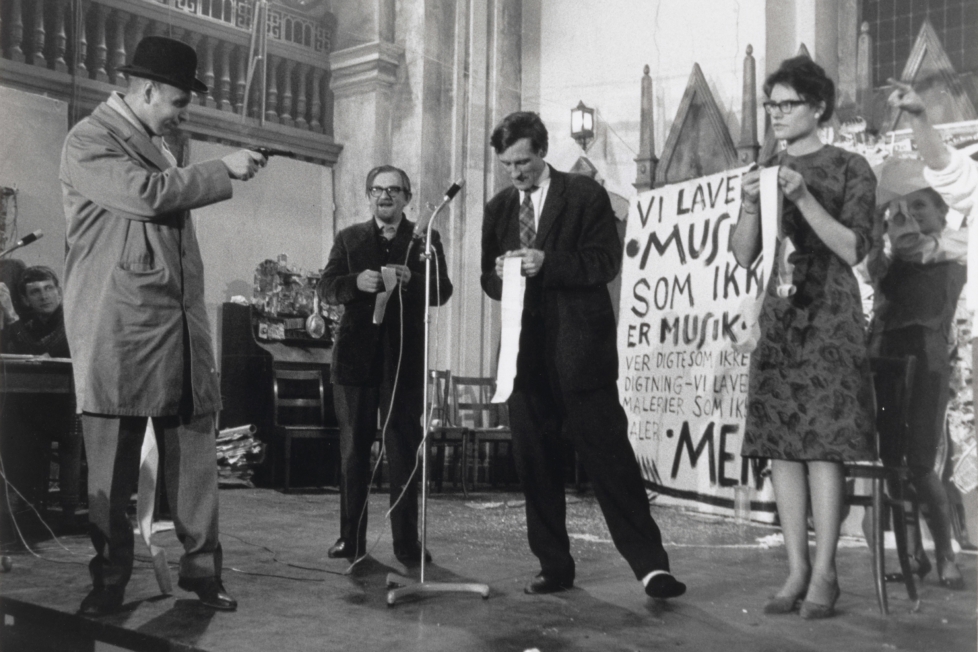
Leserinnlegg